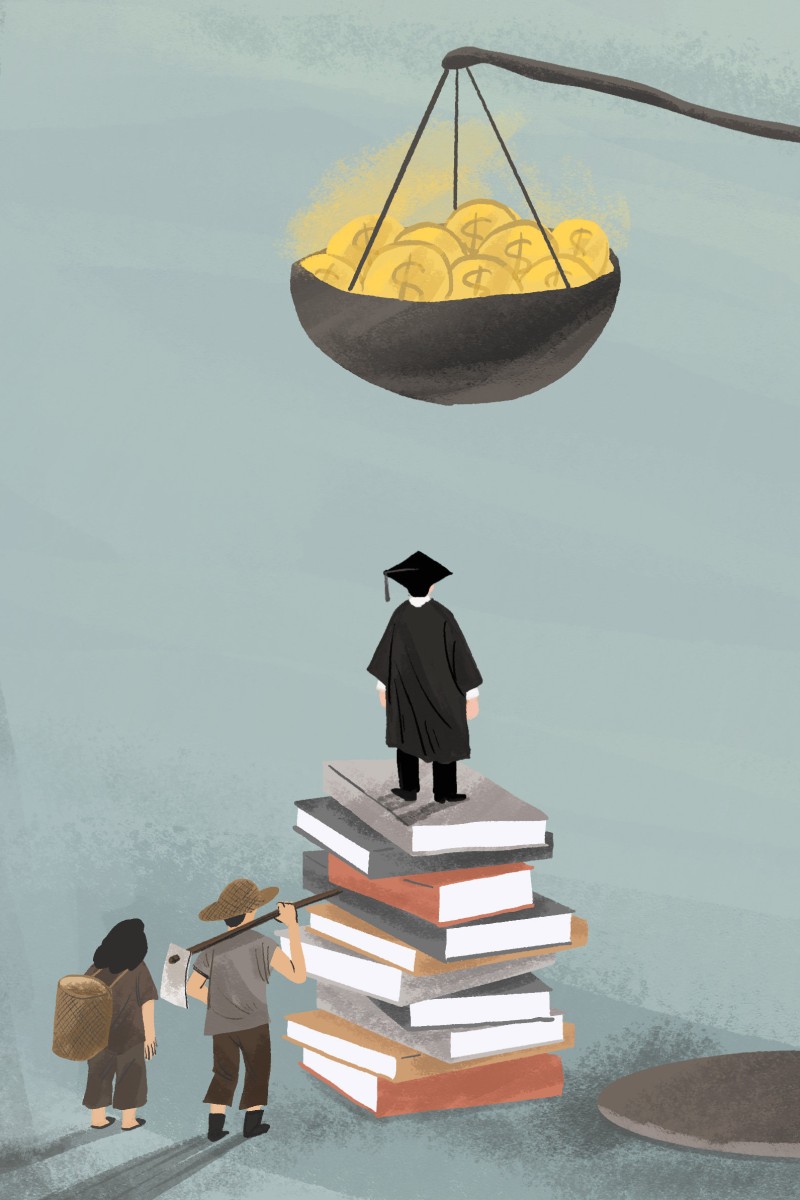
Spark Deep Dive: How China’s urban-rural divide affects university students
Pupils from small, remote areas must overcome class divisions that continue to widen and disadvantage them
 China’s urban-rural gap is a threat to growth. Is the divide too wide to fix? Photo: SCMP
China’s urban-rural gap is a threat to growth. Is the divide too wide to fix? Photo: SCMPZheng Yajun is a mainland-born PhD graduate of the University of Hong Kong. She knows from experience how difficult it is to break through China’s urban-rural divide.
She was raised and educated in a small town in the northwestern province of Gansu. She sat for the gaokao, China’s university entrance exams, twice before she was admitted to Shanghai’s Fudan University in 2009.
Life wasn’t easy at the well-respected Fudan University. Zheng struggled to understand her professors and classmates from big cities. She said many of her classmates from less developed regions had a similar experience.
“In my first year of university, I couldn’t understand why – although I had worked hard since childhood and never wasted a day – I still looked so bad compared to other students [from big cities],” she said.
She managed to survive the competition. After graduating from Fudan, she expanded her master’s thesis on the gap between urban and rural students at top universities in China. Her findings were published last year.
Zheng’s book focuses on class differences and how students’ backgrounds can affect their time in university. Several works on similar topics have been published in recent years in China. There has been a lot of media coverage and public debate on the topic.
These discussions ask the same question: are class divisions and the urban-rural divide impossible to fix in today’s China?
The Communist Party leadership knows that if the urban-rural divide continues to widen, it could impact China’s economic growth.
Zheng said that despite their efforts, many students from less developed regions find it difficult to enter the middle class.
She interviewed 62 students from Beijing’s Tsinghua University and Shanghai’s Fudan University and found that the differences in their life choices at university and after graduation were greatly affected by their background.
Students from big cities have a better understanding of how to survive at elite universities. They can plan their careers, and it is easier for them to find an “elite” job after graduation. Students from rural areas, however, are at a disadvantage in this game.
The university students interviewed by Zheng are already at the top of the rural student pyramid. Things are more difficult for the many pupils at the bottom, who are largely invisible.
According to her research, rural graduates from top universities still achieved more social mobility than their parents. Still, they fell behind their urban peers after graduation.
Staff writer
Question prompts
1. Which of the following statements are true based on the news?
(1) Upon entering Fudan University, Zheng had no trouble speaking with her peers from big cities.
(2) Zheng did her master’s thesis on how students’ backgrounds impact their experience at top Chinese universities.
(3) Students from cities have an easier time finding elite jobs after university.
(4) Zheng’s research did not gain much interest from the public.
A. (1), (2) only
B. (2), (3) only
C. (1), (4) only
D. (3), (4) only
2. Based on the news, indicate TWO ways in which students from rural areas struggle in university and after graduation compared to their peers from cities.
3. Explain how Zheng researched her master’s thesis and what her findings suggest about the urban-rural divide in China.
Illustration
Question prompts
1. What is the artist trying to say about the urban-rural divide in this illustration?
2. Have you experienced any troubles throughout your education due to your background or where you are from? If so, how did you work to overcome them?
Glossary
urban-rural divide: the differences between growing up and living in a big city or a small town, which may be poorer and less developed. Children from rural areas may not have as much money or access to good schools or other important resources for their physical, mental and emotional growth.
gaokao: the national university admission exam for China, held in early June. The exam lasts around nine hours over a period of a few days. It can be very competitive.
social mobility: how a person’s socio-economic situation improves or declines compared to their parents or grandparents. It is measured in terms of earnings, income, social class, health, education, and more.
Sample answers
News
-
B
-
Students from rural backgrounds may have a harder time understanding their peers and professors from cities when they go to university. Individual efforts and hard work are not enough overcome these problems. Students from cities are also more prepared to jump into their careers and are taught how to succeed in university. This means they are more likely to get elite jobs.
-
Zheng did more than 60 interviews with students at two universities to compare their life and career choices with their backgrounds. Her research found that rural graduates from top universities struggle compared to their peers from the city. At the same time, these rural graduates managed to achieve more social mobility than their parents.
Illustration
-
The illustration shows there are more obstacles for rural students looking to improve their education and careers. The traffic cones and rubbish on the staircase symbolise the difficult path ahead, and the student on the rural side looks very unsure. Meanwhile, the student from a city seems confident, with a clear path for his life. The staircase also has words such as “career paths” and “starting salaries” written on the steps, showing how the urban student has an easier path to reach these milestones, since he doesn’t have anything in his way.
-
Answers may vary.
